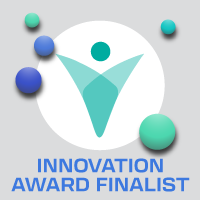Precision Medicine and Diagnostics (Room 210C)
Innovation Award
Rapid and ultra-sensitive identification of pathogenic DNA in blood using a novel blood drying technique
Tuesday, February 6, 2024
11:30 AM - 12:00 PM EST
Room/Location: 210C
Sponsored By
.png)
.png)

Jongwon Lim (he/him/his)
University of Illinois at Urbana-Champaign, Illinois, United States
Abstract: In vitro diagnostics has been widely used for the accurate identification of disease-causing agents. The conventional diagnostic methodology can be succinctly delineated as the extraction of requisite target DNA from pathogens, subsequent purification of indispensable elements enveloped by a multitude of contaminants in the bloodstream, and culminating in the transfer of the refined and purified DNA into reagents designed for subsequent analytical procedures like PCR. Despite notable advancements in reagent technology, current diagnostic techniques continue to confront substantial constraints primarily attributed to limited availability due to time-consuming procedures of extraction and purification. To tackle these challenges, we have devised a contrasting strategy involving the introduction of reagents directly into the dried blood matrix. Here, we present a novel blood drying approach that can neutralize a multitude of inhibitors while simultaneously facilitating the transportation of analytical enzymes to target DNA, resulting in fast and ultra-sensitive diagnostics. Colorimetric analysis and ELSIA have demonstrated that Inhibitors, such as hemoglobin and IgG, are physically locked within the dried blood structure without causing disruption to subsequent reactions. The structural configuration of dried blood exhibits sub-micrometer scale features with mesopores, offering an extensive surface area. This morphology enhances the probability of enzyme diffusion into the dried blood matrix, facilitating its interaction with target DNA for downstream reactions. Simultaneously, fluorescent dyes can migrate to the supernatant phase, enabling visualization of the presence of pathogenic DNA of interest. These outcomes were substantiated through diverse analytical techniques including Scanning Electron Microscopy (SEM) imagery, Atomic Force Microscopy (AFM) measurements, Brunauer-Emmett-Teller (BET) and Barrett-Joyner-Halenda (BJH) analyses for pore size and surface area. The effective diffusion coefficient of the dried blood matrix was determined through Fluorescence Recovery After Photobleaching (FRAP) analysis, while wetting capacity was characterized via contact angle measurements. Through our comprehensive array of characterizations, we have effectively showcased the adaptability of the blood drying technique. This is exemplified by its successful application in isothermal amplification reactions such as Loop-Mediated Isothermal Amplification (LAMP) and Recombinase Polymerase Amplification (RPA), achieving exceptional sensitivity at the single-molecule level (atto-molar range). Additionally, the blood drying protocol demonstrates its inherent potential as a remarkably efficient extraction method, as it involves the exposure of pathogens to ambient air during the desiccation process. This feature not only facilitates the detection of bacterial pathogens but also extends to viral pathogens within the blood, all while adhering to a simplified protocol. This efficacy can be attributed to the inherent fragility of viral envelopes. As a cumulative result, this innovation enables straightforward and expeditious identification of pathogens within complex whole blood samples. We hold the anticipation that our protocol will introduce a transformative solution capable of revolutionizing diagnostic practices, thereby enhancing patient outcomes in a substantial manner.

.png)

